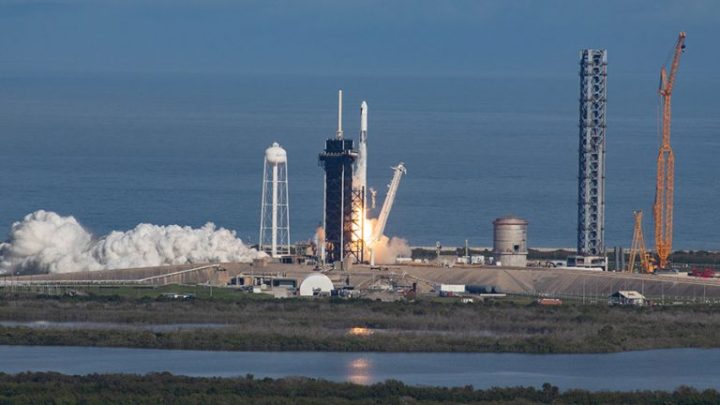A SpaceX Dragon spacecraft arrived at the International Space Station this morning, Sunday, November 27, carrying a wide range of scientific experiments as well as a pair of new solar arrays for the station’s ongoing power system upgrades. Launched on Saturday, November 26 at 2:20 p.m. ET using a Falcon 9 rocket from Launch Complex 39A at NASA’s Kennedy Space Center in Florida, the Dragon traveled yesterday afternoon and throughout the night to dock with the station at 7:39 a.m. ET this morning.
Docking confirmed! #CRS26 was soft-captured by the @Space_Station at 7:39am ET (1239 UTC) over the Pacific Ocean. pic.twitter.com/nXOMKBMysq
— NASA (@NASA) November 27, 2022
The Dragon docked with the station’s Harmony module, and as it was uncrewed its docking was overseen by NASA astronauts Nicole Mann and Josh Cassada. The Dragon, part of the mission named CRS-26, joins a busy space station where craft are parked including the Crew-5 Dragon which carried astronauts to the station in October, a Cygnus-18 spacecraft that brought supplies on an uncrewed launch earlier this month, a Russian Soyuz MS-22 spacecraft which carried two cosmonauts and a NASA astronaut to the station in September, and two Russian Progress resupply ships.

Included in the Dragon were a number of scientific experiments and technology demonstrations as well as supplies totaling 7,700 pounds, which will now be unloaded from the Dragon and into the space station. The Dragon will remain docked with the station for around one month before it is filled with cargo and the results of completed scientific experiments and is returned on an uncrewed flight to Earth.
Part of the delivery made by the Dragon is two new solar arrays for the space station. Called International Space Station Roll-Out Solar Arrays, or iROSAs, these arrays are to be deployed at an offset above the station’s existing array, as part of a long-term project to upgrade the station’s power system. Even though the new arrays are smaller than the old arrays, they still produce the same amount of power due to improvements in technology. Some of these new arrays have already been deployed, while the newly arrived arrays will be deployed in upcoming spacewalks.
“These solar panels, which roll out using stored kinetic energy, expand the energy-production capabilities of the space station,” NASA writes. “The second set launching in the Dragon’s trunk once installed, will be a part of the overall plan to provide a 20% to 30% increase in power for space station research and operations.”



